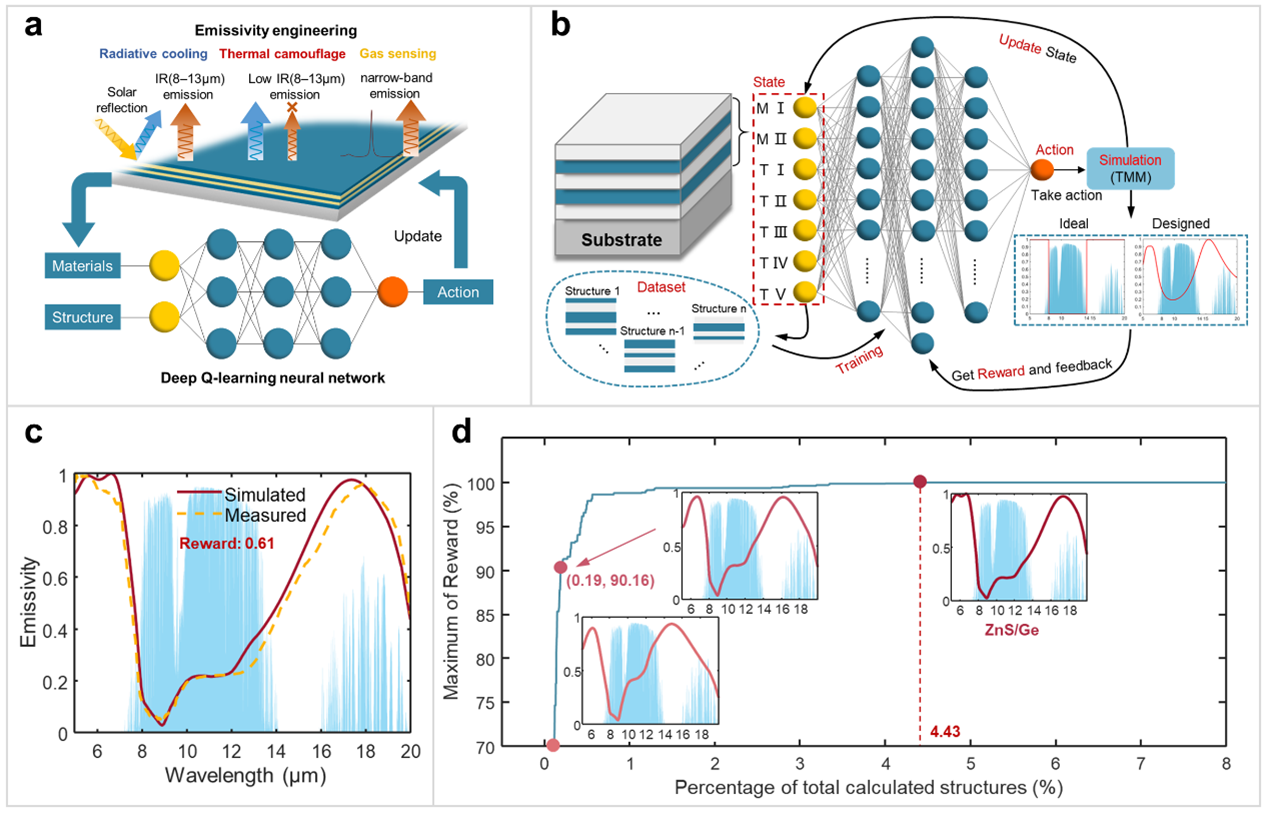Wavelength-selective thermal emitters (WS-TEs) have been frequently designed to achieve desired target emissivity spectra, as a typical emissivity engineering, for broad applications such as thermal camouflage, radiative cooling, and gas sensing, etc. However, previous designs require prior knowledge of materials or structures for different applications and the designed WS-TEs usually vary from applications to applications in terms of materials and structures, thus lacking of a general design framework for emissivity engineering across different applications. Moreover, previous designs fail to tackle the simultaneous design of both materials and structures, as they either fix materials to design structures or fix structures to select suitable materials.
In a new paper (https://doi.org/10.1038/s41377-023-01341-w) published in Light Science & Applications, a team of scientists, led by Professor Run Hu form School of Energy and Power Engineering, Huazhong University of Science and Technology, China, and co-works have proposed a general deep learning framework based on deep Q-learning network algorithm (DQN) for efficient optimal design of WS-TEs across different applications. Employing this framework, they designed three multilayer WS-TEs for thermal camouflage, radiative cooling and gas sensing, respectively. The materials of the WS-TEs are autonomously selected by DQN algorithm from the same common material library according to the target emissivity spectra of different applications and the structural parameters are optimized simultaneously. The three designed WS-TEs all presents excellent performance, which are experimentally fabricated, measured and the actual emissivity spectra match well with the target one. As such, the proposed framework is demonstrated to be feasible and efficient in achieving reverse design of WS-TEs within a vast optimization design space. More importantly, it offers a general framework for emissivity engineering across different applications and paving the way for efficient design of nonlinear optimization problems beyond thermal metamaterials.
The proposed framework is a general design approach for emissivity engineering that is highly scalable across the design parameters of the WS-TMs, including material, structure, dimension, and target function. The core of the framework is that the DQN algorithm can receive various design parameters and output a decision to update the parameters. In the continuous iterative update, DQN gradually learns how to make appropriate decisions to finally achieve the optimal design. These scientists summarize the advantage of their proposed framework:
“The merits of the deep Q-learning algorithm include that it can 1) offer a general design framework for WS-TEs beyond one-dimensional multilayer structures; 2) autonomously select suitable materials from a self-built material library and 3) autonomously optimize structural parameters for the target emissivity spectra.”
“Considering the 8 available materials, this structural configuration leads to 8×7×505= 1.75×1010 potential candidate structures. The demand of simultaneous material selection and structure optimization, together with the sheer volume of optimization space, renders manual design impractical and presents significant challenges to conventional machine learning methods.” they added.
“Additionally, the input parameters of the DQN framework are highly flexible in materials, structures, dimensions, and the target functions, paving the general solution to other nonlinear optimization problems beyond emissivity engineering.” the scientists forecast.
###
References
DOI
Original Source URL
https://doi.org/10.1038/s41377-023-01341-w
Funding information
This work was supported by the National Natural Science Foundation of China (52211540005, 52076087, 52161160332), Natural Science Foundation of Hubei Province (2023AFA072), the Open Project Program of Wuhan National Laboratory for Optoelectronics (2021WNLOKF004), Wuhan City Science and Technology Program (2020010601012197), Knowledge Innovation Shuguang Program, Key Research and Development plan of Hubei Province (2021BGE037), JSPS Bilateral Joint Research Projects (120227404).
About Light: Science & Applications
The Light: Science & Applications will primarily publish new research results in cutting-edge and emerging topics in optics and photonics, as well as covering traditional topics in optical engineering. The journal will publish original articles and reviews that are of high quality, high interest and far-reaching consequence.
